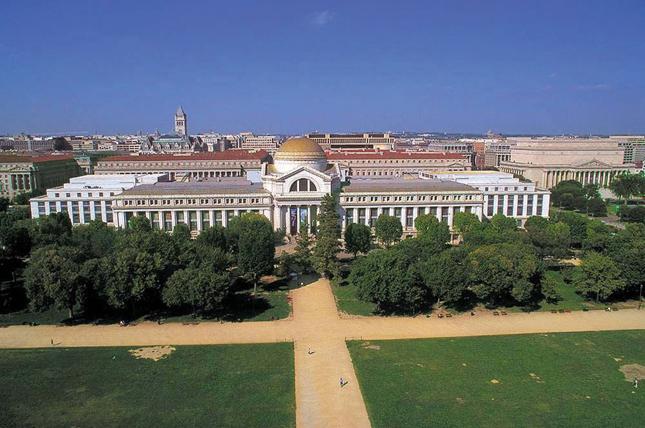It is ironic that the bastard son of the Duke of Northumberland left the family name on what was to become the largest museum complex in the world. There is still some mystery as to why James Smithson, a native Englishman who never visited the United States, left his fortune (approximately $510,000 in 1836) to create such an institution in America. It probably had to do with his own origins; he criticized the British aristocratic system and described the British monarchy as a “contemptible encumbrance.”
Smithson went through his early years using his mother’s name, Macie. He distinguished himself in school, and then as a scientist and leading mineralogist of his time. He even discovered a mineral, which later was named “Smithsonite.”
When Smithson inherited a large estate from his father, he began the process of changing his name to Smithson. Upon his death, his will stipulated that if his nephew died with no heirs (which his nephew did), Smithson’s fortune would go “to the United States of America, to found in Washington an establishment for the increase and diffusion of knowledge among men.”
While the gift was accepted by Congress in 1836, it took them 10 years to decide how to use it.
After much debate, Congress selected a site and an architect for the institution. The National Mall was a swampy mess at the time, dominated by a railroad station and crisscrossed by tracks; but it proved to be an excellent choice in the years to come.
The architect, James Renwick, was a gifted engineer who had never even studied architecture, but was already famous for his design of St. Peter’s Cathedral in New York City. He brought all his brilliance to bear on the creation of the Gothic revival building that quickly became known as “The Castle.” Since Smithson had been a scientist, Congress interpreted his gift as a place for scientific exploration and inquiry. The museum’s first curator was renowned scientist Joseph Henry, who was so devoted to building up the institution that he actually lived in its east wing from 1847 until his death in 1878.
In its early years, the museum amassed a huge collection of American memorabilia and was nicknamed “America’s attic.” But in 1886, a fire swept though the building, destroying the collection.
Fortunately, the building was restored and new collections began. In addition, auxiliary museums sprung up along the Mall to expand on a broader historic, artistic and educational theme. Today, the Smithsonian is made up of 19 museums, nine research centers and the National Zoo. Each year, it is visited by 28 million people.
James Smithson, a wise investor who was able to swell his inheritance into a fortune, would no doubt be proud of what he started with his vague but determined bequest to a country he had never once seen.
On the other hand, you could say he got here 75 years after he died. Alexander Graham Bell, a regent of the Smithsonian at the time, went to Genoa, Italy, where Smithson was buried, and had the body exhumed and brought to Washington. James Smithson is now enshrined in a tomb in “The Castle,” where he can forever overlook the incredible legacy that must have outpaced even his greatest dreams.


